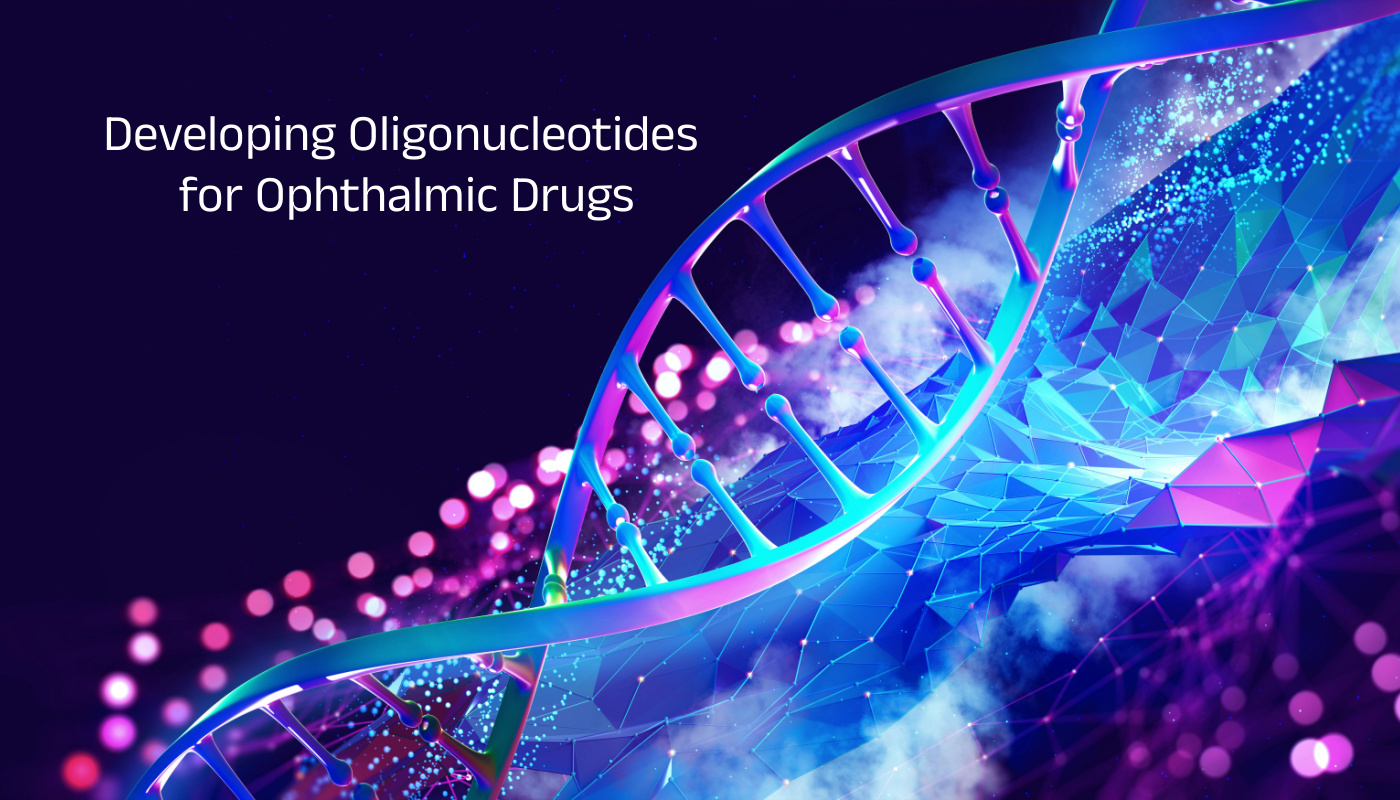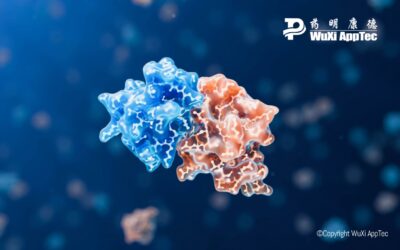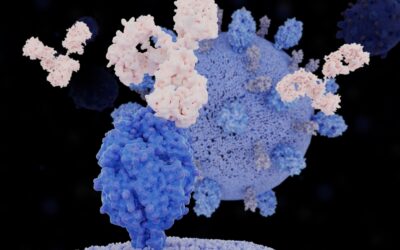Oligonucleotides, also known as “oligos,” are increasing in popularity due to their ability to target conditions previously thought undruggable. And oligos have proven remarkably effective when it comes to retinal conditions such as X-linked retinitis pigmentosa (RP), Usher syndrome, and Leber’s congenital amaurosis.
Oligos are a class of small synthetic nucleic acid polymers used to modulate gene expression. Several have advanced to clinical trials for treating ocular diseases, including those listed above and more common conditions like age-related macular degeneration (AMD), dry eye syndrome (DES) and corneal disease.
Since the introduction of the first approved treatment for ocular diseases, advancements in delivery systems and chemical modifications have significantly enhanced the stability and cellular uptake of these therapies. As oligo drugs have become more prevalent, it’s become more important to understand the challenges associated with these therapeutics and how to handle them through rigorous and efficient studies.
The challenges associated with oligos
Oligos represent unique challenges to researchers when targeting eye diseases. Their molecular weight, coupled with the anatomical and physiological barriers of the eye, can cause inefficient delivery to intracellular targets. These barriers affect drug entry, whether using topical, systemic, injectable, or other methods of administration. The eye is also a closed and compartmentalized organ, and due to its relatively small size, lower doses are required to treat conditions while mitigating the risks of toxicity.
Selecting the correct method of administration is a significant challenge, and each form of drug delivery has positives and negatives.
Topical administration in the form of eye drops: This method is preferred for treating anterior segment diseases, as it offers local delivery of drugs and is convenient for the patient. However, it often suffers from poor drug absorption and low bioavailability. When used to deliver drugs to the posterior segment of the eye for glaucoma and other conditions, researchers often find poor drug bioavailability.
Intraocular administration (injection into the eye): An alternative method to eye drops, injections demonstrate greater bioavailability, drug concentration and cell targeting but can cause a significant immune response. If oligo therapies are not properly formulated and dosed, patients can suffer severe inflammation, unsafe toxicity levels and vision loss.
The target tissue ultimately determines drug delivery to the eye, but some general strategies exist to improve oligo delivery. These include deploying chemical/backbone modification, lipid nanoparticles, and direct covalent conjugation of moieties that promote intracellular uptake.
Oligos are also notoriously unstable and require specialized handling and homogenization conditions for tissue samples. Diverse bioanalytical approaches—i.e., LC-MS/MS, LC-HRMS, qPCR, LC-FL and LBA—are often required for complete DMPK characterization. These challenges are all made more difficult by limited regulatory guidance on the topic.
ADME properties to consider
Oligos have a low risk of drug-drug interaction, but it’s still recommended to carry out CYP enzyme induction and inhibition studies to exclude the possibility of interference with the CYP enzyme. Bioanalytical platforms are needed for oligo studies, including mass spectrometry, qPCR and fluorescent detectors. Early exploration of the PKPD correlation of oligos also requires analyzing target mRNA, target protein or downstream biomarkers.
Furthermore, it’s important to remember that the small size of the eye means only tiny doses of oligos are needed; in fact, most ocular oligos have a dose level as low as 100 micrograms. Selecting appropriate bioanalytical methods with high sensitivity and specificity is crucial to achieving accurate ocular PK data for oligos.
The most common in vitro and in vivo assays used to study oligos’ absorption, distribution, metabolism and elimination (ADME) properties include:
In vitro:
- Stability in serum/plasma
- Stability in liver S9/homogenates or other target tissue homogenates
- Plasma protein binding
- Metabolite identification in plasma or liver S9/target tissues
In vivo:
- Pharmacokinetic (PK) profile
- Tissue distribution
- Urine, feces and bile excretion
- Metabolite identification in biological matrices
Conducting oligo studies
Preclinical, in vivo models for oligos must share physiological similarities with humans. For example, rabbit eyes share similar anatomy to human eyes and are commonly used in ocular preclinical studies. But the most valuable species for oligos are non-human primates (NHPs). Ocular oligo PK studies are extremely difficult to conduct, and expert veterinarians and technicians must perform varying ocular administrations and collect complicated ocular tissues.
When the oligo is delivered to the eye, if most of the drug is retained within ocular tissues and systemic exposure is negligible, researchers can focus on distribution and clearance within those tissues rather than the rest of the body. Depending on the target tissues of the specific ocular disease, selecting and collecting dissected ocular tissues is critical to evaluating the tissue PK. If oligo concentration in the systemic circulation is observed, developers could consider a quantitative whole-body tissue distribution study and an excretion study.
Final thoughts
The ability to target previously undruggable conditions makes oligos an exciting area of research. But, developing oligo drugs, particularly for the eyes, brings a host of challenges. PK studies are notoriously difficult and complex, and there is limited regulatory guidance, as lawmakers haven’t yet caught up to the scientific advancement. All this means drug developers and sponsors are encouraged to work with a trusted, experienced lab partner to develop these promising therapies.
As a global company with operations across Asia, Europe, and North America, WuXi AppTec provides a broad portfolio of R&D and manufacturing services that enable the global pharmaceutical and life sciences industry to advance discoveries and deliver groundbreaking treatments to patients. Through its unique business models, WuXi AppTec’s integrated, end-to-end services include chemistry drug CRDMO (Contract Research, Development and Manufacturing Organization), biology discovery, preclinical testing and clinical research services, helping customers improve the productivity of advancing healthcare products through cost-effective and efficient solutions. WuXi AppTec received an AA ESG rating from MSCI for the fourth consecutive year in 2024 and its open-access platform is enabling around 6,000 customers from over 30 countries to improve the health of those in need – and to realize the vision that “every drug can be made and every disease can be treated.”


